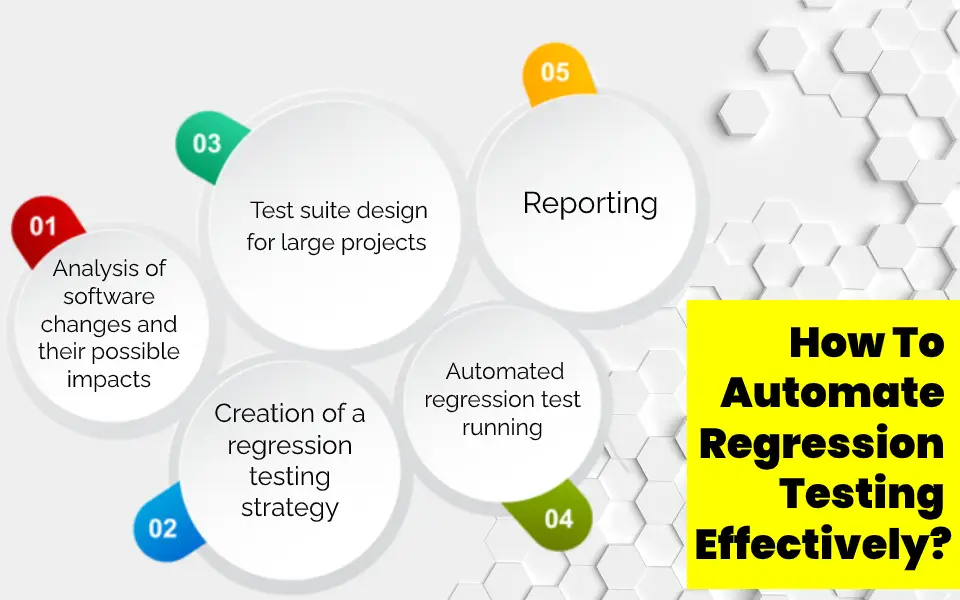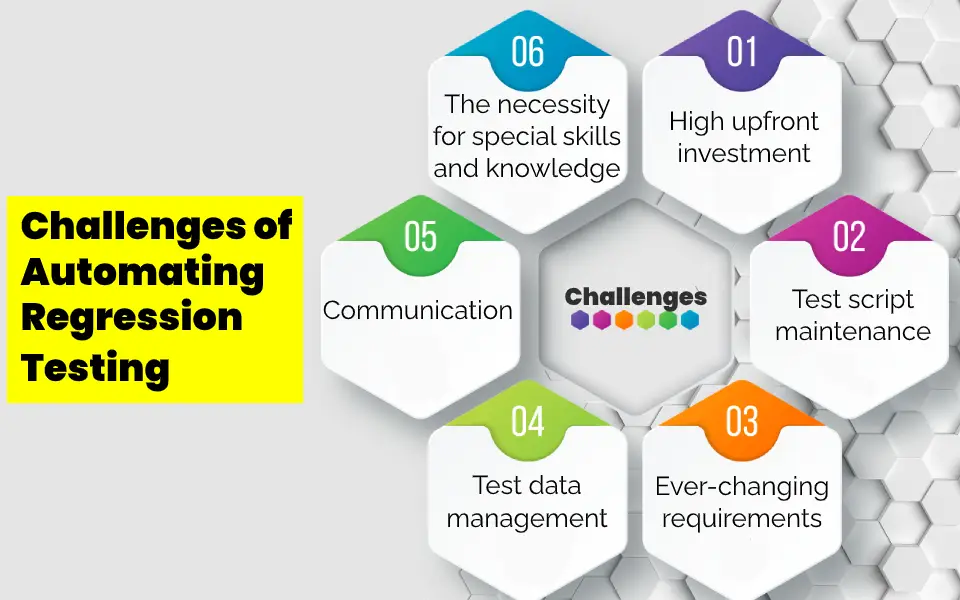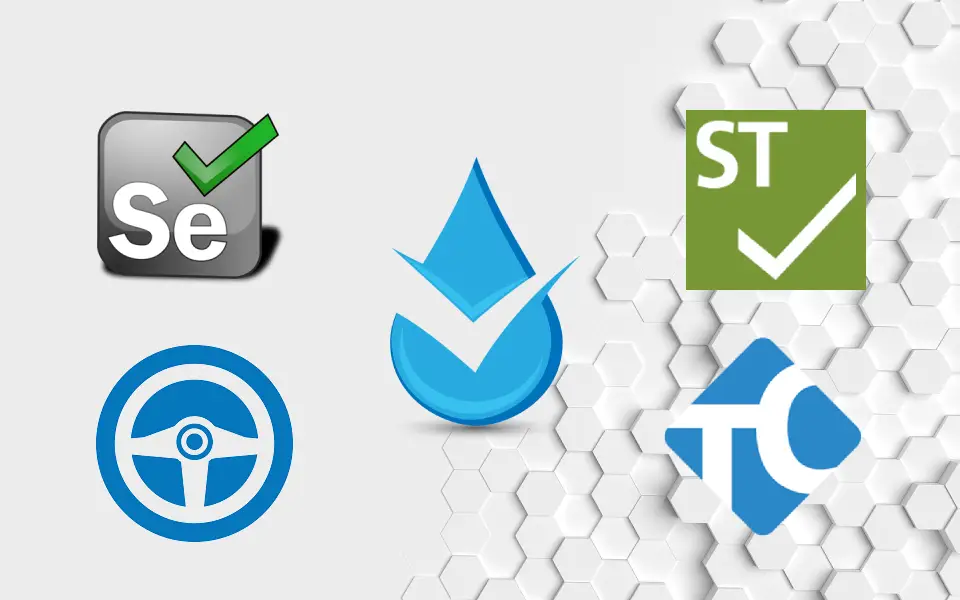12 minutes to read
Regression testing: to automate or not to automate? A How-To Guide on Automated Regression Testing


Ievgen Ievdokymov
Senior QA Engineer
The modern pace of life requires things to be done without a hitch but with space velocity. It is especially relevant for software development. As a rule, product teams currently work under constant pressure to deliver a product as fast as possible. As applications are getting more complicated and large it is more and more difficult to perform all tasks properly and meet deadlines. A QA team that is in charge of product quality very often suffers from the lack of time and struggles for every minute. In these terms, test automation has become a blessing especially when it comes to regression testing. However, automation has peculiarities and tricks that should be taken into account. In this article, we are going to throw the light on automated regression testing to help you get the most out of it. So, stay tuned.
What is Regression Testing?
It is just impossible to imagine any QA process without regression testing. It is indeed an effective way to catch possible defects. Regression testing is a set of functional tests that are rerun repeatedly, i.e, after each software modification to assure that recent changes have not a detrimental effect on the previously designed and perfectly worked functionality. The scope of regression tests heavily depends on the developed software itself and the extent of modifications.
Regression Testing: Why To Automate It?
Test automation has proved its efficiency, and it is considered to be particularly helpful in terms of regression testing. What is the reason? Let's figure out together why regression testing is candidate number one for automation.
Repeatable Nature
As our definition states, regression tests are rerun repeatedly. That is why for projects with frequent updates, manual execution of regression testing can be a real nightmare. So a question arises of why to repeat the same tedious work if it can be automated. The repeatable nature of regression testing and the reusability of test scripts is a perfect match. Besides, the more often regression tests have to be rerun, the higher return on investment is.
Maximum speed
These days, time is one of the most valuable assets. Business owners tend to hit a market with their product as fast as possible in order to justify investments and take the lead in the niche. Regression testing automation is the sure-fire way to immensely accelerate test execution. Thanks to automation your test run takes up a minimum possible time and can be conducted any time on a day in and day out basis.
Higher test coverage
Due to test automation, a QA team can test not only fast but also more. Thanks to speedy automated execution much more tests can be checked and, consequently, there is an opportunity to reach higher test coverage. Therefore, you can be more confident in your product quality.
No human intervention
Automated regression tests can be run without any human supervision and intervention. It means that first of all there is no need to ramp up your team of manual testers continuously, and secondly available testers can focus on more critical scenarios that require particular attention. To put it another way, with the help of automation your QA team can deal with more important tasks, whereas your regression tests run on their own.
Accuracy
It is a fact of life that human testers prone to make mistakes dealing with continuous and monotonous tasks. As a result, human error is a usual thing. In a few hours of tedious work, it is so easy not to notice a bug or skip a test. With automated regression testing, accuracy is guaranteed as tests are conducted according to the preprogrammed scenario. If tests are properly maintained, all functionality covered with corresponding tests is thoroughly tested.
When Does Automated Regression Testing Work Best?
Automation of regression testing is indeed beneficial but only if its implementation is reasonable. The point is that not every project is appropriate for test automation. So it must be carefully analyzed in order to understand whether test automation will be cost-effective. Below, you can see a list of facets indicating that regression testing automation could be useful in all respects.
When Is Automation Of Regression Testing Irrelevant?
It is not a misprint or an error, and your eyesight is fine. Automated regression testing is indeed not suitable for every project. There are situations when it is cheaper and faster to carry out regression tests manually. This refers to small-scale and unsophisticated projects. The matter is that test automation requires a considerable upfront investment that can be justified only if a project is long-lasting and there is a need to rerun regression tests numerous times. Besides, test automation requires certain prearrangements. For instance, it is necessary to build and maintain a test automation framework, develop scripts and then maintain them on an ongoing basis. All these procedures can take much more time than usual manual testing.
In such a way, before getting to automated regression testing, you should weigh up the advantages and disadvantages to be sure that a high ROI will be achieved eventually.
How To Automate Regression Testing Effectively?

If all signs point to the fact that automation of regression testing is appropriate and beneficial for your project, the following guide on automation of regression testing can come in handy.
Analysis of software changes and their possible impacts
Before proceeding to active actions, it is crucial to consult with a development team to reveal which software modules have been modified as well as the extent of the possible impact. On the ground of this information, the QA team can make a conclusion whether complete or partial regression testing should be carried out.
Creation of a regression testing strategy
Efficient planning is a ticket to success and test automation requires some planning as well. For this reason, a QA team also makes some time to draw up a regression testing strategy describing the workflow in detail.
Test suite design
As long as regression testing strategy has outlined which software modules should undergo regression testing on the ground of the insights received after the software change analysis, automation QA engineers can define and prioritize regression tests and therefore create a corresponding test suite.
Automated regression test running
When scripts are ready and a new build is available, you can execute regression testing. It is strongly advised to run regression testing frequently and establish efficient reporting.
Reporting
As long as a test run has come to the end, you should inform team members, clients, and stakeholders about the AUT quality. To compile a complete summary testing report, it is necessary to analyze generated reports as well as collected metrics to understand whether stated testing goals have been achieved and whether the application complies with the quality requirements and standards.
Challenges of Automating Regression Testing

Automated regression testing lets QA teams save a ton of time and effort but it is possible just if it is properly implemented and maintained. This, in its turn, requires corresponding efforts, expertise, and skills. So, we offer you to take a look at the most common challenges that product teams have to face.
High upfront investment
It is not a secret that test automation is associated with significant investments referred to tool license fees, automation framework building and maintenance, recruitment of the automation QA engineers, available human resources training, etc. In such a way, teams have to make effort in order to conduct a thorough analysis and persuade business decision-makers that invested in automated regression testing money will be justified in the long run.
Test script maintenance
To provide appropriate test running without failures, it is crucial to maintain test scripts on an ongoing basis. In essence, test script maintenance is a ticket to success in terms of test automation and its main challenge at the same time. In order to make sure that test scripts correspond with the product development, it is necessary to regularly review them. Still, the number of regression tests enhances with each sprint. On the one hand, the more regression tests are automated and executed, the higher test coverage is. On the other hand, more automated tests mean more maintenance efforts. Automated regression tests should be written, updated, or dislodged with every app modification.
Ever-changing requirements
This point is somehow related to the previous one. Since nowadays more and teams give preference to Agile methodology of software development, they have to effectively address ongoing changes of requirements that are caused by frequently changed market conditions that must be considered during product development. As a result, the app undergoes continuous modifications as new features are implemented while the available ones are updated or deleted. All these must be reflected in regression tests, As a result, test script maintenance is getting a daily routine for automation QA engineers who have to polish their automated tests to provide effective software testing.
Test data management
As a rule, test execution suggests the use of the vast amount of test data that should be prepared, maintained, and properly tested to ensure its correctness and reusability. Even with powerful modern technologies that are available today test data management is a rather challenging task.
Communication
Effective communication is a receipt for success. So there must be a collaborative interaction and close communication between a QA team, a development team, PMs, BAs, SMEs, and stakeholders. It is very important in order to have all the involved parties on the same page and be able to capture and effectively implement all the changes. So communication is a must for automated QA engineers as it provides them with the information required for successful maintenance of automated regression tests.
The necessity for special skills and knowledge
Those who have a vague idea about effective automation of regression testing may state that it can be carried out by manual testers due to the availability of a wide array of record and playback testing tools. However, this is nonsense. Effective regression test automation implies having in your QA team experienced specialists who can build and maintain test frameworks, write and maintain test scripts, resolve urgent technical issues, and offer effective solutions. All these things beyond all questions require advanced programming skills and profound automation knowledge.
Top Automated Regression Testing Tools

Regression testing is a must and it is frequently executed during the whole product development process, to be exact, at the end of each iteration to reveal bugs caused by recent software modification. So, today's market offers a great variety of tools created to simplify and optimize regression testing automation. The most helpful and consequently popular tools you can see below along with their brief overview.
SELENIUM
Selenium is one of the best-known and commonly used tools. It is a viable option to automate regression testing for web apps. Selenium supports many test frameworks and languages. One more advantage is compatibility with the major web browsers and operating systems.
IBM RATIONAL FUNCTIONAL TESTER
This commercial automation tool is often considered to be a regression automation tool number one. So it represents value for money. The list of its main features includes visual editing, Advanced ScriptAssure technology, test scripting, early data detection, integration with other solutions, support of all web browsers, and others.
WATIR
This is a free and user-friendly tool for web app regression testing. It is a good option for those who are good at Ruby. Watir provides a comprehensive range of features enabling easy test writing, reading, and maintenance. The access to numerous Ruby libraries gives an opportunity to incorporate Ruby in diverse applications developed with various technologies.
TESTCOMPLETE
While being commercial, this tool is a great option for simultaneous test running. It is actively used to automate regression tests for the most varied kinds of apps. Created tests can resist changes in product GUI. More options that are worth mentioning are test recording and visualization, DB testing support, automatic test scheduling, etc.
SILKTEST
It is a well-known automation tool suitable for a wide array of applications. It provides opportunities for simultaneous test running, quick feedback, service virtualization, cross-platform testing, cross-browser testing, etc.
So while making your decision on an automation tool for regression testing, reveal your preferences, carry out market research, and make active use of a free trial to clearly understand if a tool can meet your objectives and requirements.
Conclusion
Any code modification is rather unpredictable. Implementation of new features, deletion of existing ones, and even bug fixing can result in new bugs. In this context, regression testing is the best measure that can be taken. Still, the main challenge of regression testing is its continuously growing scope of tests. To overcome this problem and execute the whole set of regression tests on time, it is highly recommended to automate your regression testing. This can help you significantly optimize your QA process and save a lot of time but on the condition that your project is long-lasting.
Similar Posts

8 minutes to read
Who is a SDET? Meaning, Role, and Importance
- test-site-search
- site-search
- test-search-form

10 minutes to read
Top Mobile Automation Testing Tools: Open Source, Android, iOS
- mobile-test-automation
- mobile-device-test-automation
- test-automation-for-mobile-devices
- mobile-application-test-automation-framework
- mobile-app-test-automation
